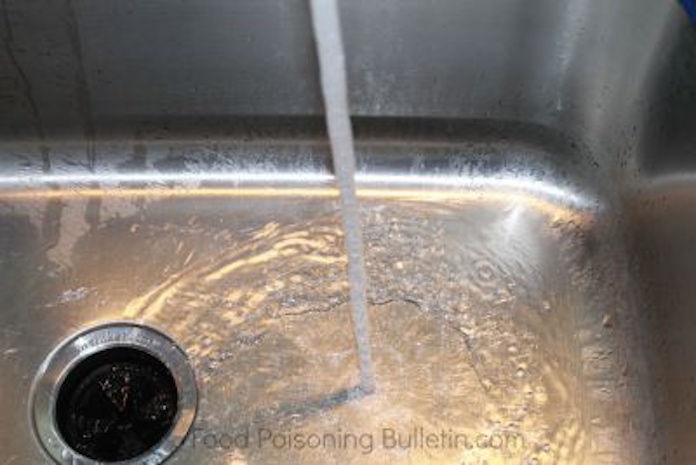Your kitchen sink is an important part of food safety and preventing foodborne illness, according to the USDA. Think about everything you use your sink for: rinsing produce, cleaning pots, pans, plates, cups, and utensils, and discarding meat and produce scraps. All of those things can carry pathogenic bacteria.

The USDA recently completed a study looking at how consumers handle food and how good they are at preventing cross-contamination. Participants prepared a meal with raw sausage, shell eggs, and a fruit salad made with cantaloupe. That study showed that the kitchen sink was the most cross-contaminated part of the kitchen at 34%.
And 26% of samples of cut-up cantaloupe removed from the completed fruit salad was contaminated with bacteria. There are several ways this can happen. There could be bacteria in the sink and the cantaloupe touches the sink when it is being washed; and if hands aren’t washed properly after touching raw meat or poultry or unwashed fruit.
So it’s important to disinfect your sink after use use it to wash or prepare food. This is a two-step process.
Step one: use warm, soapy water to wash the sink. Scrub it well with a clean sponge or clean towels. Then wipe it clean with paper towels or a single-use towel. Don’t use a towel that has already been used, since it may be contaminated as well.
Step two: Use a sanitizer on the sink and let it air fry. You can use a commercial sanitizer, a sanitizing wipe, or you can make your own by combining 1 tablespoons of liquid chlorine bleach (not scented!) with 1 gallon of water.
Cleaning and sanitizing your sink, as well as following other food safety rules, will help reduce the risk that you will get sick. These steps are important for everyone, but especially if you have a member of your family who falls into a high risk group: the very young, pregnant women, the elderly, and anyone with a chronic illness or compromised immune system.




